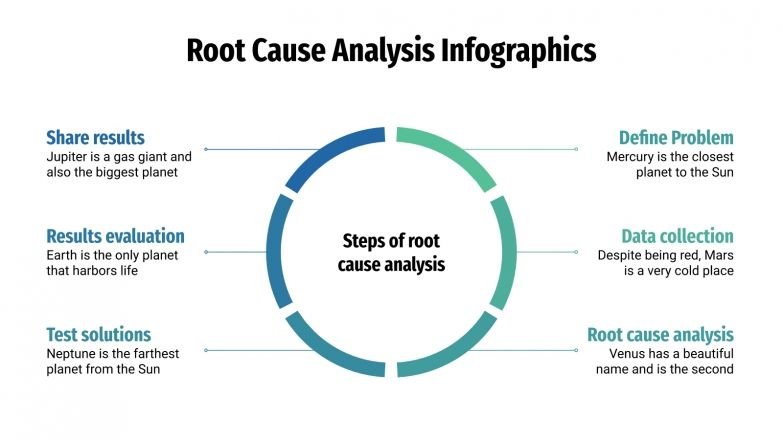Root Cause Analysis (RCA) is a problem-solving method that aims to identify the underlying causes of a problem or event. It is a structured approach that helps organizations to identify and address the root causes of problems and incidents. RCA is used in various fields, such as engineering, healthcare, manufacturing, and business. This article will explain the definition of RCA, provide examples, and describe various methods used in RCA.

What is Root Cause Analysis (RCA)?
Root Cause Analysis (RCA) is a problem-solving technique that helps organizations to identify the underlying causes of problems and incidents. It is a systematic approach that involves identifying the problem, gathering data, analyzing the data, identifying the root causes, and developing and implementing solutions. RCA is used to solve complex problems and to prevent future incidents.
RCA is used in various fields, such as engineering, healthcare, manufacturing, and business. In the healthcare industry, RCA is used to identify the causes of adverse events, such as medication errors, patient falls, and hospital-acquired infections. In the manufacturing industry, RCA is used to identify the causes of product defects and equipment failures. In the business industry, RCA is used to identify the causes of customer complaints and process inefficiencies.
Examples of RCA Example 1:
A manufacturing company is experiencing a high rate of product defects. The company decides to conduct an RCA to identify the root causes of the problem. The RCA team gathers data on the production process, such as the quality of raw materials, the calibration of equipment, and the training of employees. After analyzing the data, the team identifies the root causes of the problem, which are poor quality control procedures and inadequate training of employees. The company implements solutions, such as improving quality control procedures and providing additional employee training, to prevent future defects.

Pay Someone to Do My Homework for Me
Example 2:
A hospital experiences a patient fall. The hospital conducts an RCA to identify the root causes of the fall. The RCA team gathers data on the patient’s condition, the medication the patient was taking, the hospital environment, and the actions of the staff. After analyzing the data, the team identifies the root causes of the fall, which are a lack of communication between the staff, the patient’s medication, and the patient’s condition. The hospital implements solutions, such as improving communication between the staff and reviewing medication administration procedures, to prevent future falls.
Methods of RCA
- Five Whys. The Five Whys is a simple and effective RCA method that involves asking “why” questions to identify the root cause of a problem. The method involves asking “why” five times, or until the root cause is identified. The method is based on the principle that every problem has a cause, and that by identifying the cause, the problem can be solved.
- Fishbone Diagram. The Fishbone Diagram, also known as the Ishikawa Diagram or the Cause-and-Effect Diagram, is a visual tool used to identify the root causes of a problem. The diagram is shaped like a fishbone and consists of a problem statement at the head of the fishbone and causes of the problem at the branches. The diagram is used to organize and categorize the causes of the problem.
- Fault Tree Analysis. Fault Tree Analysis (FTA) is a method used to analyze and understand the causes of complex systems or events. The method involves identifying the top event, which is the problem or incident, and analyzing the causes that led to the event. FTA is a graphical method that uses logic gates to represent the causes of the event.
- Pareto Chart. The Pareto Chart is a graphical tool used to identify the most significant causes of a problem. The chart is based on the Pareto Principle, which states that 80% of the effects come from 20% of the causes. The chart consists of a bar graph and a line graph. The bar graph shows the frequency of each cause, while the line graph shows the cumulative percentage of the causes. The chart helps to prioritize the causes and focus on the most significant ones.
- Root Cause Mapping. Root Cause Mapping is a method used to identify the root causes of a problem by visually mapping the causes and their relationships. The method involves identifying the problem, gathering data, and creating a map of the causes and their relationships. The map consists of a problem statement at the center and branches representing the causes and their relationships. The method helps to understand the complex relationships between the causes and to identify the root cause of the problem.
Benefits of RCA RCA offers several benefits to organizations, including:
- Preventing future incidents: RCA helps organizations to identify and address the root causes of problems and incidents, which helps to prevent future incidents.
- Cost-saving: RCA helps to reduce the cost of incidents by addressing the root causes and implementing solutions to prevent future incidents.
- Continuous improvement: RCA helps organizations to continuously improve their processes and procedures by identifying areas for improvement and implementing solutions.
- Risk management: RCA helps organizations to manage and mitigate risks by identifying potential hazards and addressing them before they cause incidents.
Conclusion
Root Cause Analysis (RCA) is a problem-solving method that helps organizations to identify and address the root causes of problems and incidents. RCA is used in various fields, such as engineering, healthcare, manufacturing, and business. RCA involves identifying the problem, gathering data, analyzing the data, identifying the root causes, and developing and implementing solutions. There are several methods of RCA, including the Five Whys, Fishbone Diagram, Fault Tree Analysis, Pareto Chart, and Root Cause Mapping. RCA offers several benefits to organizations, including preventing future incidents, cost-saving, continuous improvement, and risk management. By using RCA, organizations can improve their processes, reduce costs, and improve customer satisfaction.
- Role and Importance of Professional Ethics in the Chosen Profession
- Best Freelance Essay Writers For Hire in Nigeria
- An Online University with Unlimited Possibilities -Best Accredited Online Colleges
- Making A Transition to College? What You Need to Know
- How to Write an Outstanding Resume: 5 Golden Rules!
Find online help in writing essays, research papers, term papers, reports, movie reviews, annotated bibliographies, speeches/presentations, projects, presentations, dissertation services, theses, research proposals, essay editing, proofreading, Book reviews, article reviews, formatting, personal statements, admission essays, scholarship essays, application papers, among others.


 WRITE MY ESSAY NOW!
WRITE MY ESSAY NOW!